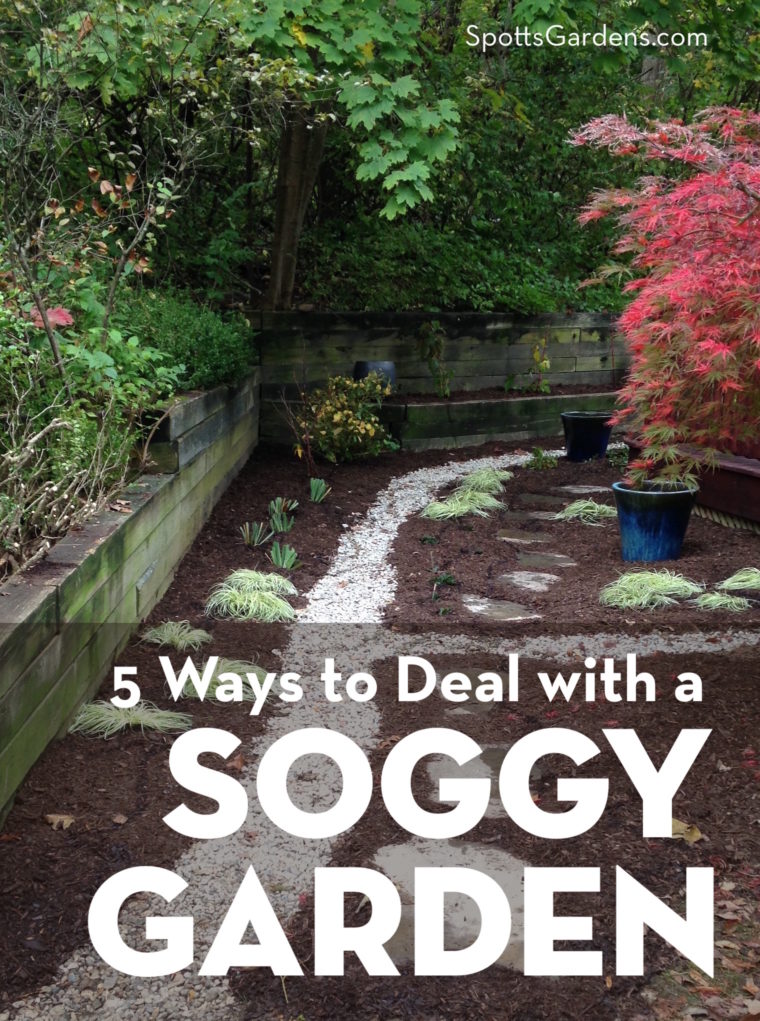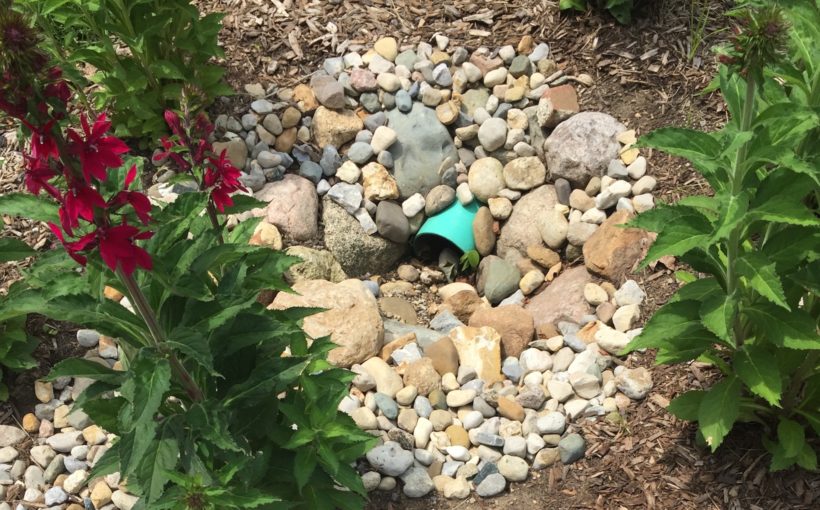Are there places in your yard where water is pooling or spots that are eroding from water runoff? Water is too precious a resource to be treated as a problem! Instead, get that water back into the soil where it can nurture plants and recharge groundwater.
Even one of these five rainscaping strategies will help manage water runoff. But in combination, they’re even more powerful.
Store Water in the Soil
Improving your soil’s ability to hold water is a simple, inexpensive way to reduce runoff. Soil amended with organic matter is both able to drain better and to hold water more efficiently. So add compost to the soil, and mulch any exposed areas with an organic mulch, like hardwood mulch or straw. Planting thickly will also help; the roots improve water’s ability to soak into the soil.
Use a Rain Garden
A rain garden is designed to temporarily hold water until it can soak back into the ground. A shallow depression about 6″ at its deepest, a rain garden is planted with tough, deep-rooted plants that can take occasional inundation and also improve the soil’s ability to soak up water.
A rain garden is ideal as the catchment for water that you need to move from elsewhere in the garden. We used one at the SGS garden to solve runoff from a slope that was regularly flooding our building.
Rain gardens must be sited at least 10′ from any buildings and should not be within 5′ of property lines. So they’re not practical close to building or where soil is particularly compacted.

Move the Water to Where It Can Sink In
Bioswales are vegetated ditches with gently sloped sides. Like rain gardens, they are planted with plants that can handle occasional inundation. But instead of holding water until it can drain away like a rain garden does, the bioswale directs water to a rain garden or to an outlet like a storm sewer.
In narrow spots where bioswales aren’t practical, especially right next to buildings, French drains are an alternative. A deep trench is laid with stone, then a perforated, corrugated tube (covered with a landscape fabric “sock” to keep out soil and roots) is laid over the crushed stone. The tube directs the water to a rain garden or other outlet. The tube is then covered with more stone. Very deep French drains may then be covered with soil and planted.
Shallow French drains can actually be a design asset. Instead of covering the top of the tube with gravel and then soil, we cover the tube with decorative stone like river rock. You can see an example of how we created a French drain here.
Collect Water with a Rain Barrel
By placing a rain barrel under a downspout, you can collect chlorine-free water that you can later use in the garden. Hooking several rain barrels together lets you collect even more water.
Because rain barrels generally aren’t big enough to collect all the water that runs off during a rain event, we recommend pairing your rain barrels with other management strategies.
Reduce the Amount of Impervious Surface
Impervious surfaces are a huge contributor to runoff. Concrete patios, walkways, solid driveways, even the roofs on our houses all sluice water off instead of allowing it to return to the ground.
You can replace some of these features with alternatives that allow water to soak through. Patios, paths, and even driveways can be created from permeable pavers.
For a terrific introduction to managing stormwater in the garden, check out the Rainscaping Guide from Missouri Botanical Garden.
Ready to Rainscape Your Yard?
We’ll help you manage rainwater in a smart, sustainable way! Contact us for a free estimate.
